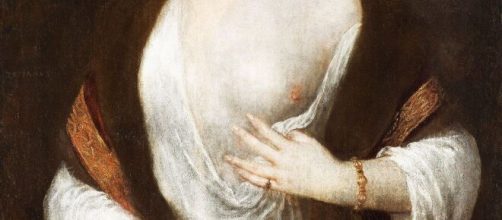It’s the fashion these days for museums to focus on female artists who were forgotten by history. Now comes a variation on curating exhibits in an egalitarian way.
By the title alone, Vienna’s Kunsthistorisches Museum’s exhibit “Titians’s Vision of Women” looks to be less doctrinaire than the archetypal image of women as objects of art.
But exhibit examples don’t fit the bill as advertised – “Shortly after 1500, Titian in Venice began to produce paintings in which women were depicted in a new light.”
Great expectations
Reading that, you expect to see images of females painted by Titian doing something – anything – besides baring their bodies, behaving seductively, or getting raped.
Coming readily to mind is Titian’s celebrated painting "Diana and Callisto," which narrates the tired myth of Diana finding out that the Roman god Jupiter got her maid Callisto pregnant.
To hear historian Kenneth Clark tell it in his 1972 book “Study in Ideal Form,” the crouching figure in the center of Diana and Callisto – Actaeon (one of Diana’s nymphs) – “is one of the most seductive nudes in all painting,” Surely this can’t be the depiction of women cast in “a new light.”
Then there’s Titian’s seemingly interminable procession of Venus paintings, like "Venus and Adonis" and "Venus of Urbino," each without a stitch, each faithfully following the rote practices found in ancient mythology.
"Rape of Europa," for instance, would be particularly hard to reconcile with the trumpeted “new light.” The image of Jupiter disguised as a bull violating the mother of King Minos is nasty.
Titian made sure you wouldn’t forget this painting by coloring the robe torn from Europa’s body blood red. And, as if a woman being bestialized wasn’t enough, he includes in the distance Europa’s companions shrieking helplessly.
But wait, while some of these paintings of Greek myths are in the show, Titian’s portraits of women living in his own time constitute what the museum means by “women depicted in a new light.”
All sweetness and light
Apparently, the very existence of such portraits of women living in 16th-century Vienna is supposed to tell you how special they were in Viennese society. What’s so special?
Reportedly, women at the time enjoyed certain new rights when it comes to dowries and inheritance.
No small thing, but…
Despite these new rights and despite the fact that these portraits are likenesses of actual women, Titian still managed to bare their breasts or else provide partial views of them.
Not to worry. Artdaily says that while these portraits of women come with exposed anatomy, they’re not the trollops that historians thought they were. New research allows a different interpretation. Ready?
These portraits are meant as symbols of brides to be opening their hearts to their future husbands. Or as Artdaily put it, they represent the female’s agreement to a proposed union: “Titian’s paintings of women celebrate women as the greatest subject of life, love, and art.”
In that case, in the spirit of egalitarianism, does that mean that if female artists portray men with their anatomy hanging out of their pants, that would stand for life, love, and art, too?


